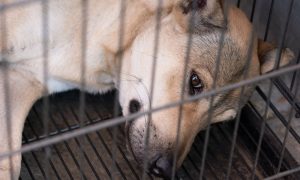The film An Inconvenient Sequel: Truth To Power premiered in cinemas this week. It’s been a decade since Al Gore’s An Inconvenient Truth first shocked us and alerted us to the alarming and escalating global warming epidemic.
Many of us are making an effort to reduce our carbon footprint. Who knew that factory farms’ emissions were contributing so much to global warming (or how terribly farm animals are treated)? We had no idea that the oceans were filling up with plastics. Lots of scary realities have come to our attention, and we need to tackle these dangerous issues.
We’re recycling. Some of us have invested in hybrid cars. According to the New York Times, Americans consumed almost 20% less meat between 2005 and 2014. We’re buying efficient light bulbs and composting. We’re learning about our carbon footprint and how to reduce it.
Conservation.org reminds us that “people need nature to survive.” They recently developed a carbon calculator to help people figure out if they are leaving a big carbon footprint.
The quiz asks about housing, the type of energy you use, your recycling habits, your diet, and ways in which you save energy. Then it questions if you use public or private transportation and if you drive an electric car. The last section of the survey is about traveling. Airplanes create a great deal of carbon. Interesting and surprising factoids about home carbon, automotive carbon, and travel carbon are on each page. Finally, the calculator crunches all the numbers and tells you how many trees are required to offset your carbon footprint. The calculator then provides the monetary value of those trees and you can donate that amount to have the trees planted if you’d like.
Want to live greener? Carbon Offsets To Alleviate Poverty (COTAP) offers ways to minimize your carbon footprint with your choices in food, household items, daily travel, vacation, and more:
Food Carbon Footprint
- Buying local (ideally organic) foods eliminates transportation with petroleum-based fuel.
- Reduce/eliminate beef and dairy consumption. Cows and other farmed animals need astronomical amounts food and water.
Home Energy
- Make sure your house is insulated and sealed.
- Purchase energy efficient appliances such as furnace, air conditioning, dishwasher, and refrigerator.
- Use fluorescent and LED light bulbs, not incandescent.
- Keep your thermostat at a moderate temperature. Thermostats that can turn your heat/air off when you’re not home are ideal.
- Go solar.
Daily driving
- Walk, bike, carpool, or take mass transit when possible.
- Drive a hybrid or electric car.
- Purchase a smaller car, and don’t use racks that decrease aerodynamics.
- Don’t speed
- Avoid traffic when possible. Cars that are sitting still in traffic emit copious quantities of carbon.
- Combine errands so you don’t have to drive several times.
Air Travel
- Fly as infrequently as possible because airplane fuel is petroleum-based.
- Take few trips of longer duration and visit places that you can drive to or have a “staycation.” Economy class uses less fuel per person than business class and first class.
- Skype or teleconference instead of business travel when possible.
- Private jets have huge carbon footprints. Don’t buy or travel in one.
General Ways to Reduce Your Carbon Footprint
- Water: Don’t wash your car too frequently; purchase shower heads, toilets, washing machines, faucet heads, and dishwashers that are energy efficient.
- Recycle and reuse: Bob The Builder was absolutely right. Manufacturing, the use of resources, packaging, transporting, and disposal of products contributes to about 29% of U.S. greenhouse gas emissions
- Advocate for clean energy like wind, solar, geothermal, hydroelectric, and biomass energy in place of fossil fuel. They are our future. Without them, we have no future.






